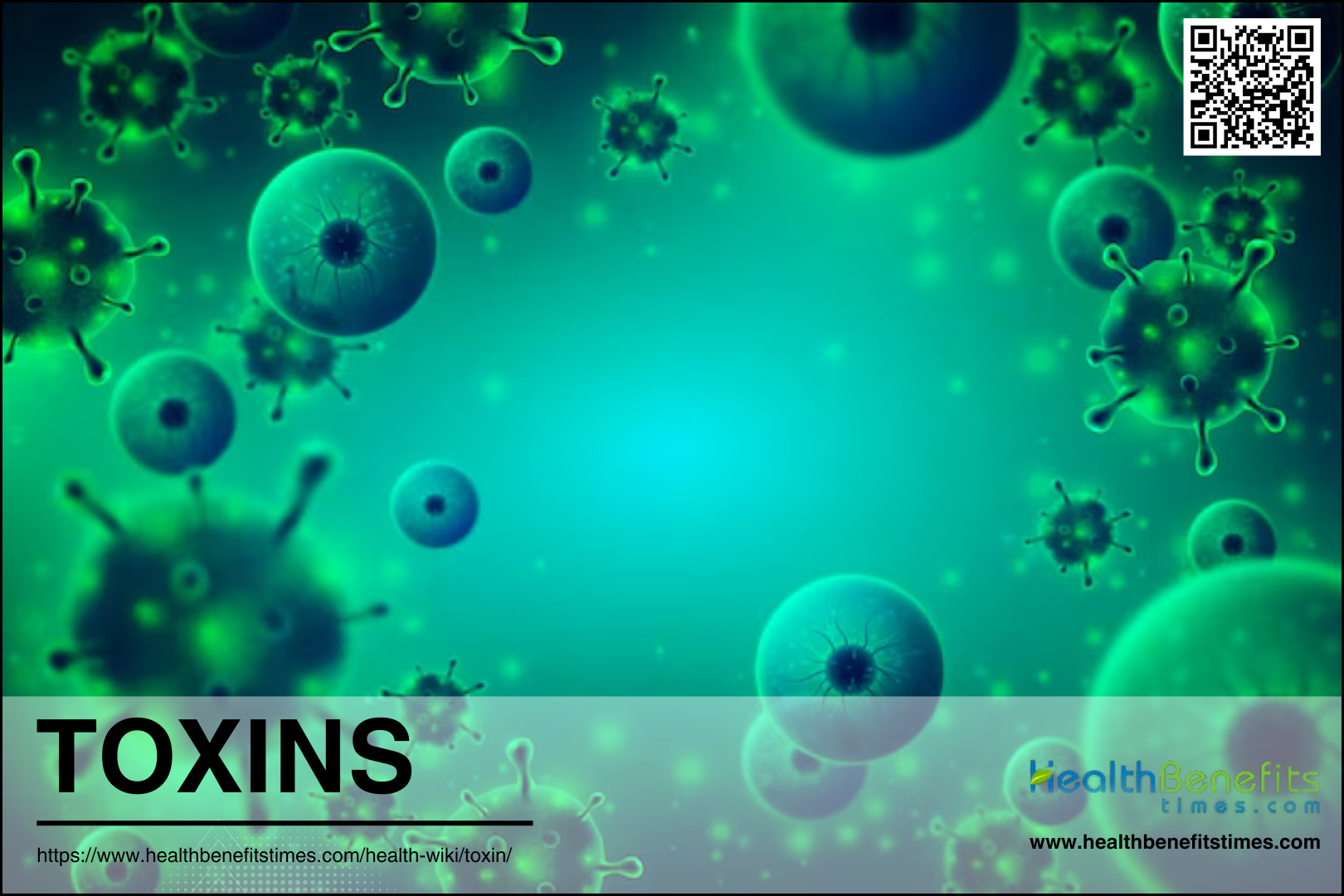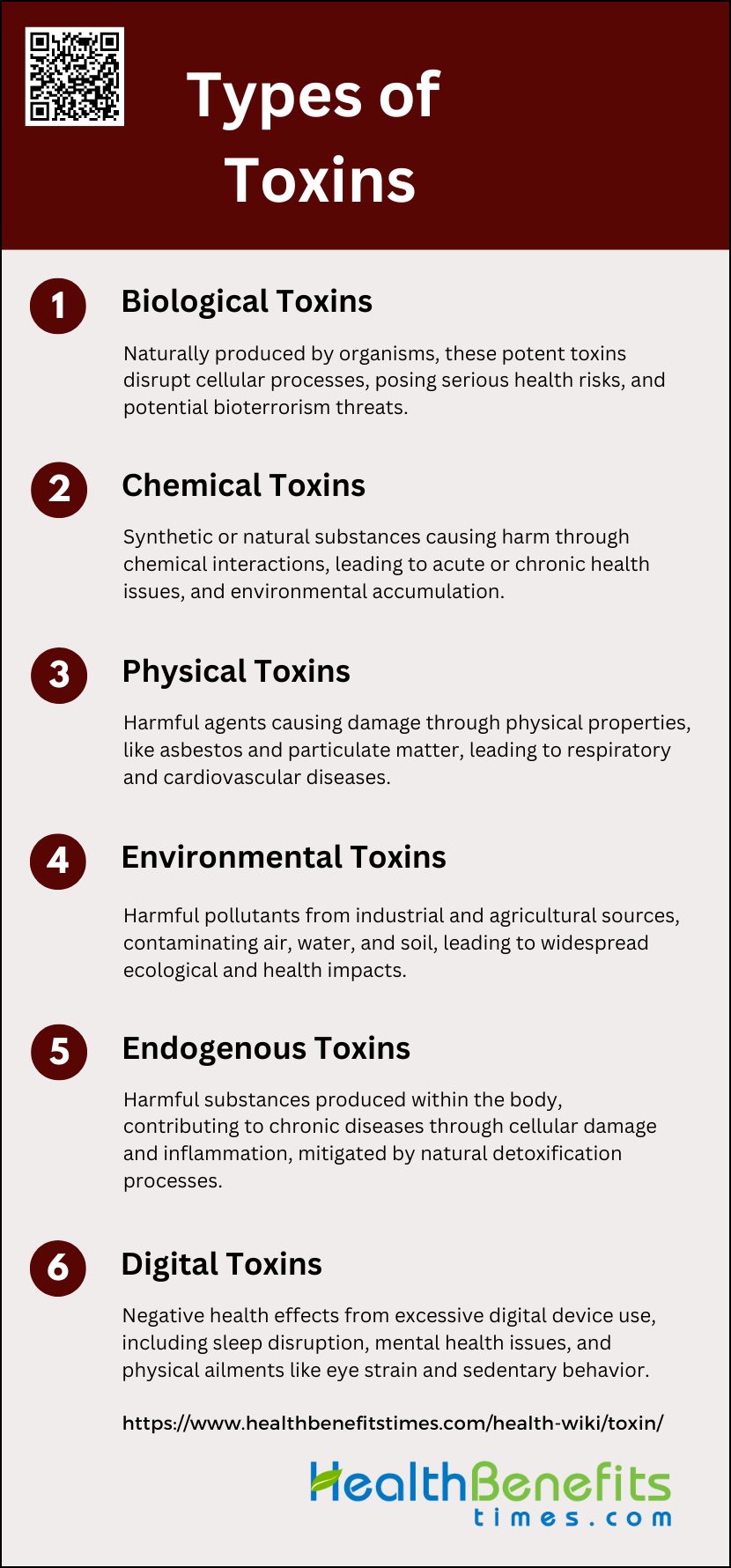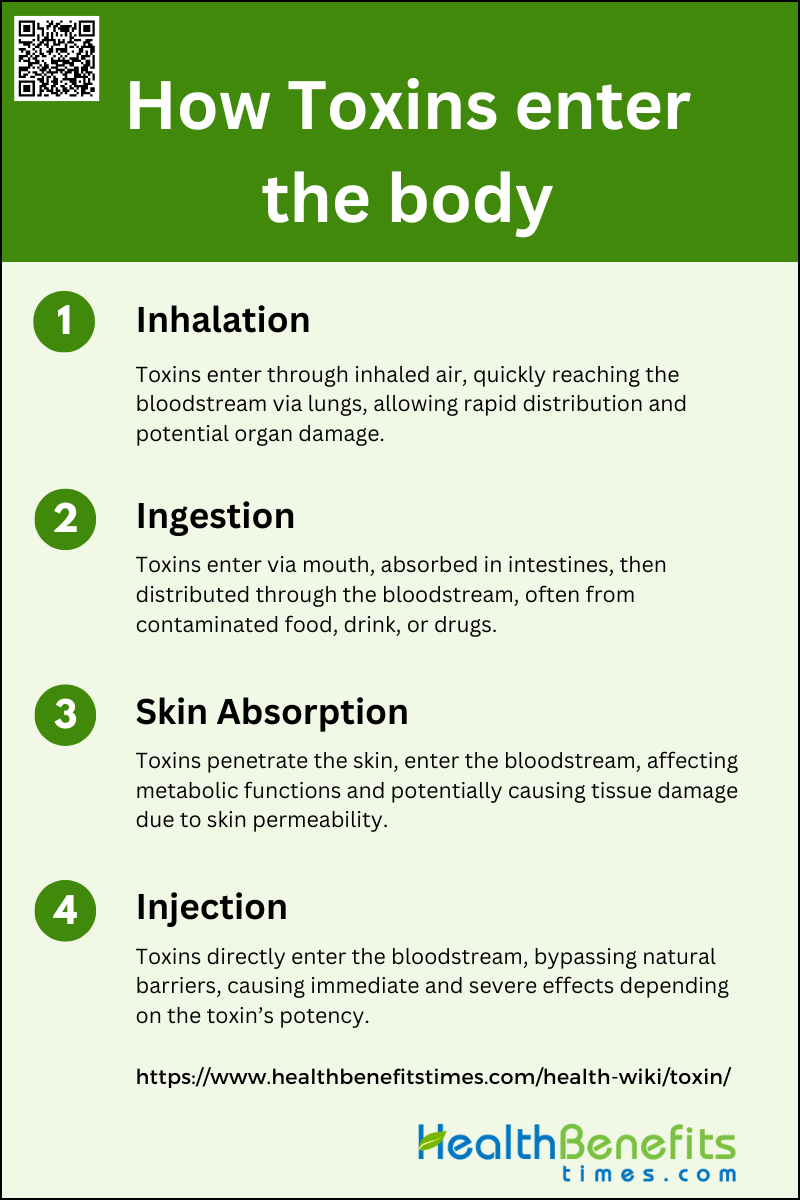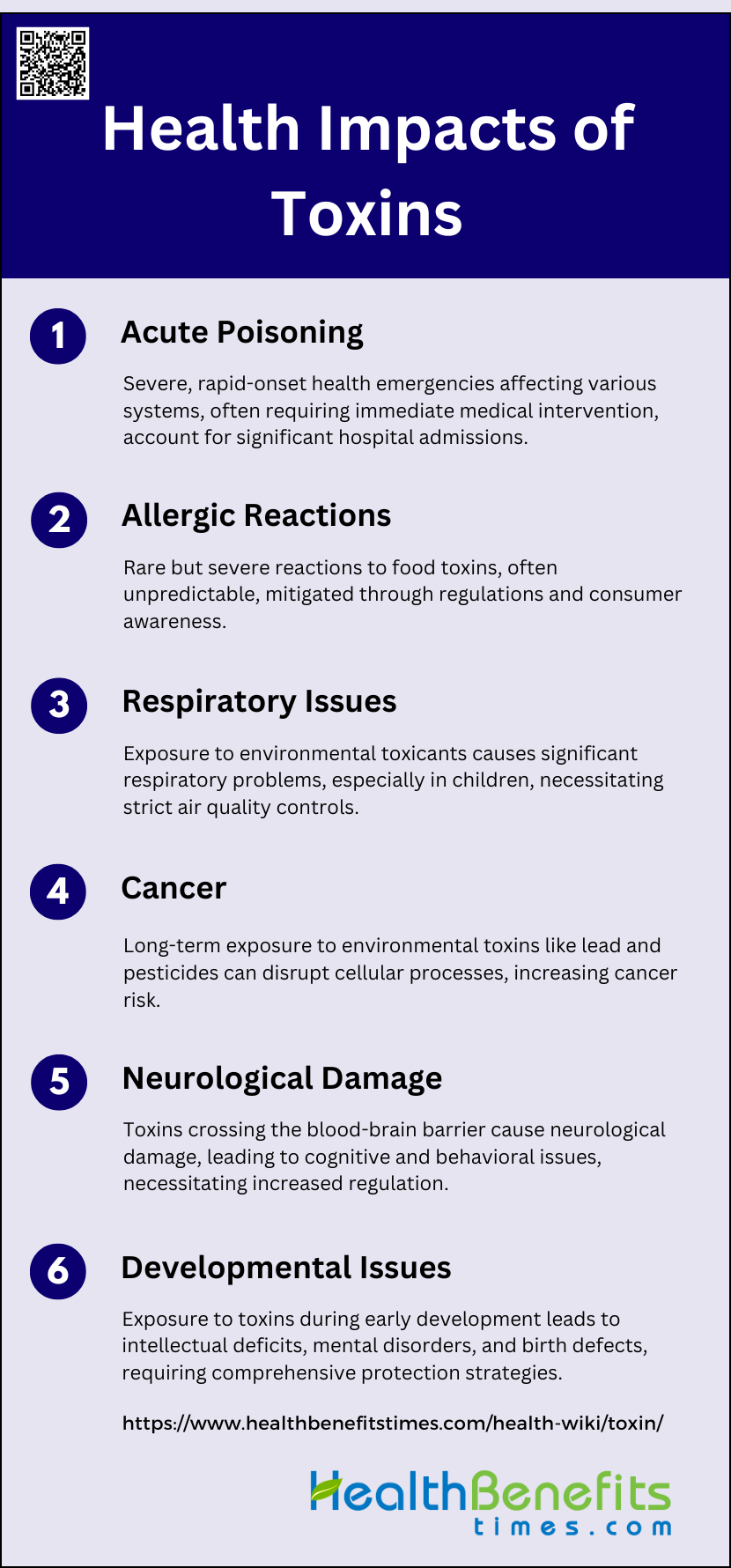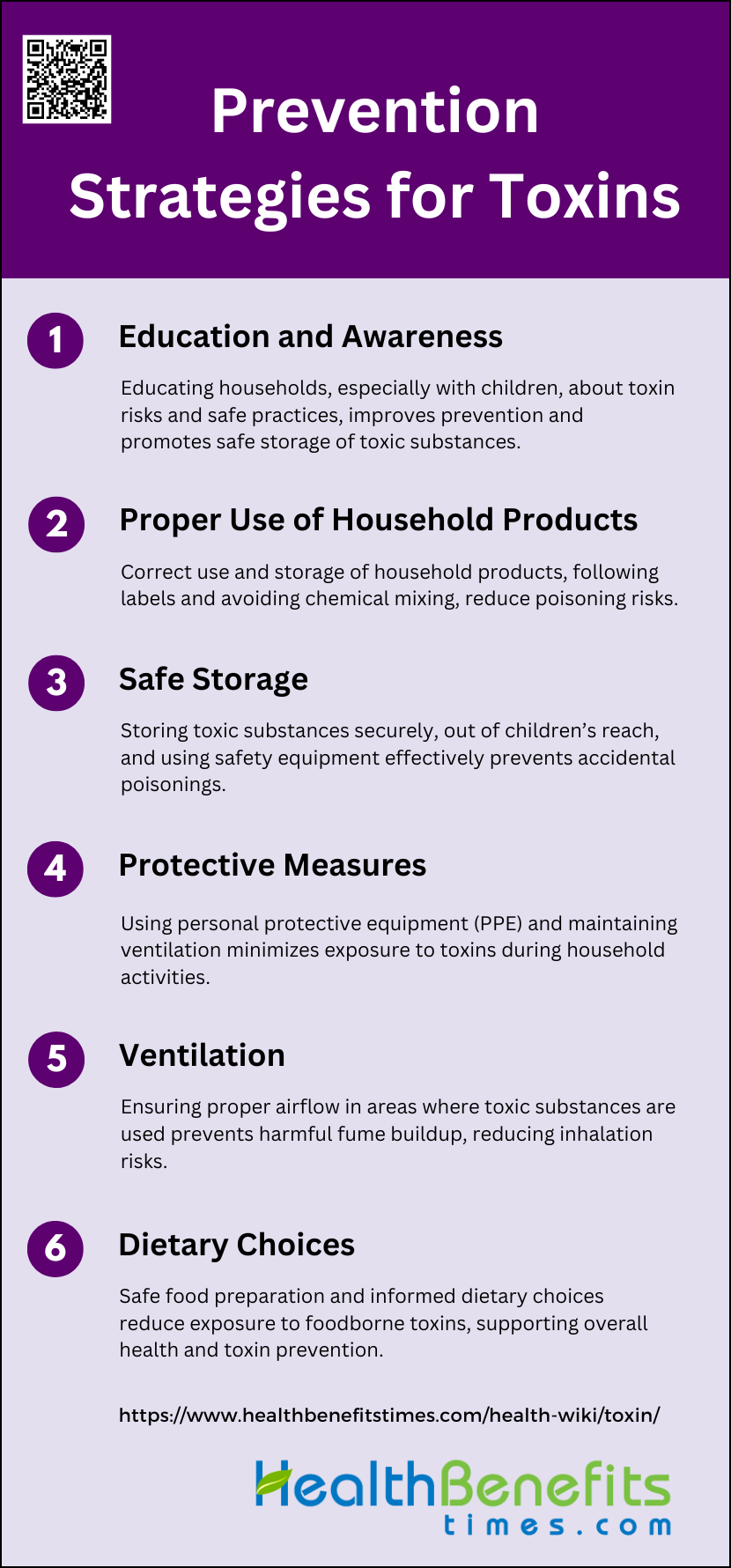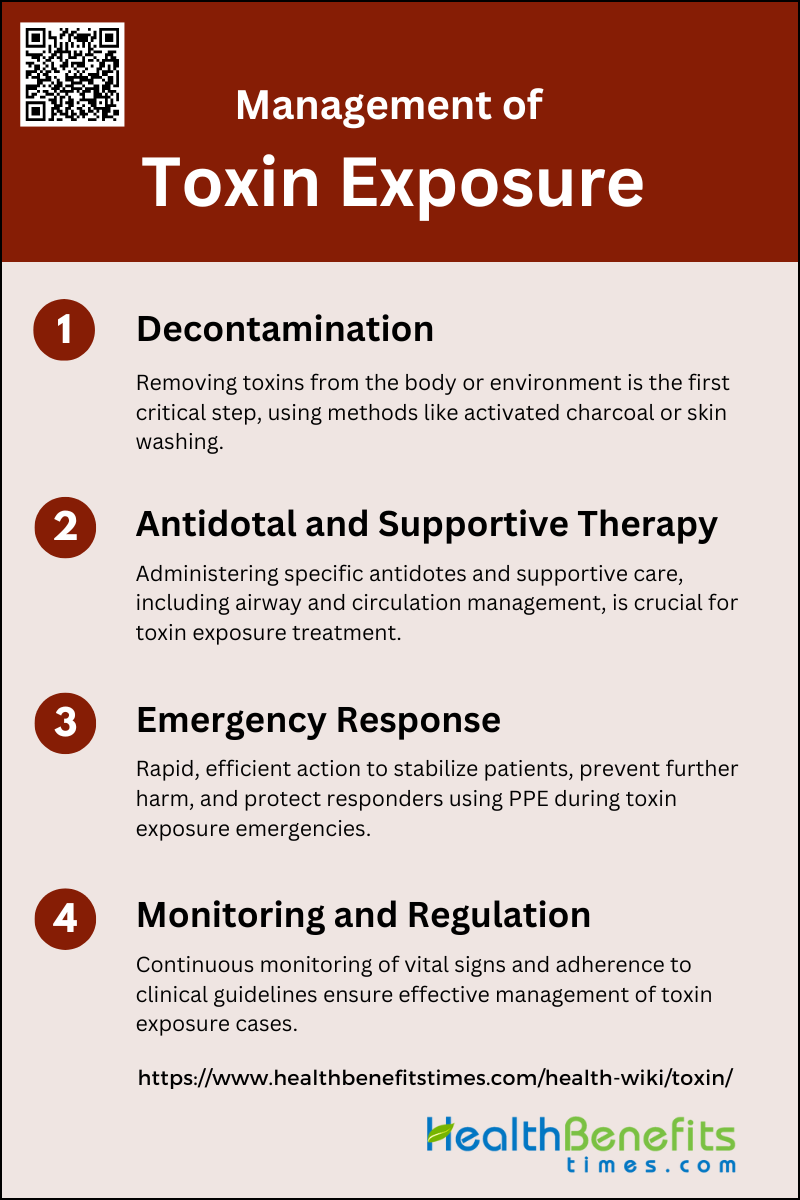Toxins are potent cytotoxic proteins produced by living organisms, including bacteria, plants, and animals, that can cause significant harm to other organisms. They gain access to mammalian cells through receptor-mediated endocytosis and must navigate complex intracellular pathways to reach their target sites without being degraded by the lysosomal system. Toxins can interfere with essential cellular processes, such as protein synthesis, and are often highly lethal even in small doses, making them attractive for use in bioterrorism. Despite their harmful effects, toxins have been harnessed for beneficial purposes, including the development of novel medicines, insecticides, and cancer therapies. The study of toxins, known as toxinology, involves understanding their mechanisms of action, evolutionary significance, and potential applications in both medical and industrial fields.
Types of Toxins
Toxins, harmful substances that can negatively affect health and the environment, come in various forms based on their origin and impact. Recognizing the diverse types of toxins is essential for understanding their potential risks and implementing effective safety measures. Below is a list of the main categories of toxins, each with distinct characteristics and effects.
1. Biological Toxins
Biological toxins are naturally produced by living organisms such as bacteria, plants, and animals. These toxins can be highly potent and are often used by organisms for defense or predation. Examples include botulinum toxin, staphylococcal enterotoxins, and ricin. These toxins can interfere with cellular processes, such as protein synthesis or nerve transmission, leading to severe health impacts like paralysis or death. Due to their potency and ease of production, biological toxins are also considered potential bioterrorism agents. They can cause food poisoning outbreaks and require sensitive detection methods for prompt response.
2. Chemical Toxins
Chemical toxins are synthetic or naturally occurring substances that can cause harm to living organisms through chemical reactions or interactions. Common sources include industrial chemicals, pesticides, and household cleaners. Examples include lead, mercury, and dioxins. These toxins can lead to a range of health issues, from acute poisoning to long-term effects such as cancer, neurological disorders, and reproductive problems. Chemical toxins often accumulate in the environment and in the bodies of organisms, leading to bioaccumulation and biomagnification, which can have widespread ecological and health impacts.
3. Physical Toxins
Physical toxins refer to substances or agents that cause harm through physical means rather than chemical or biological interactions. Examples include asbestos fibers, which can cause lung diseases such as asbestosis and mesothelioma, and particulate matter from air pollution, which can lead to respiratory and cardiovascular issues. These toxins often originate from industrial processes, construction materials, and environmental pollution. The health impacts of physical toxins are typically related to the physical properties of the substances, such as their size, shape, and ability to penetrate biological tissues.
4. Environmental Toxins
Environmental toxins encompass a broad range of harmful substances found in the environment, including pollutants from industrial activities, agricultural runoff, and waste disposal. Examples include heavy metals like lead and mercury, persistent organic pollutants (POPs) like PCBs, and endocrine-disrupting chemicals like bisphenol A (BPA). These toxins can contaminate air, water, and soil, leading to widespread exposure and health issues such as developmental disorders, immune system suppression, and cancer. Environmental toxins can also disrupt ecosystems, affecting wildlife and biodiversity.
5. Endogenous Toxins
Endogenous toxins are harmful substances produced within the body as a result of normal metabolic processes or pathological conditions. Examples include reactive oxygen species (ROS) and advanced glycation end-products (AGEs). These toxins can cause cellular damage, inflammation, and contribute to the development of chronic diseases such as diabetes, cardiovascular diseases, and neurodegenerative disorders. The body has natural detoxification mechanisms, such as antioxidant systems and enzymatic pathways, to neutralize and eliminate endogenous toxins, but imbalances can lead to oxidative stress and tissue damage.
6. Digital Toxins
Digital toxins refer to the negative effects of excessive exposure to digital devices and electronic media on mental and physical health. Examples include blue light emitted from screens, which can disrupt sleep patterns, and the addictive nature of social media, which can lead to anxiety, depression, and reduced attention spans. Common sources include smartphones, computers, and televisions. The health impacts of digital toxins are increasingly recognized, with concerns about their effects on cognitive development, mental well-being, and physical health, such as eye strain and sedentary behavior.
Sources of Toxins
Toxins can originate from a variety of sources, each contributing to their presence in the environment and potential impact on health. Identifying these sources is crucial for developing strategies to mitigate exposure and protect both human and ecological well-being. Below is a list of the primary sources of toxins, highlighting their origins and pathways.
1. Natural Sources of Toxins
Natural toxins are substances produced by living organisms that can have harmful effects on other organisms. These toxins can originate from various natural sources, including plants, animals, microorganisms, and environmental factors.
- Plants: Plant toxins, or phytotoxins, are bioactive compounds produced by plants that can be harmful to humans and animals. They are often found in food and feed, posing significant toxicological risks.
- Animals: Animal toxins, such as those from marine life, are used by predators to kill prey and can be highly toxic to humans. These include toxins from jellyfish, snakes, and other venomous animals.
- Microorganisms: Microbial toxins, including mycotoxins from fungi and bacterial toxins, can contaminate food and water, leading to severe health issues. These toxins are produced to help microorganisms compete for resources or to kill host tissues.
- Environmental: Environmental toxins like radon gas are naturally occurring substances that can accumulate in homes and other buildings, posing significant health risks such as lung cancer.
2. Man-Made Sources
Man-made toxins are synthetic or industrial chemicals that can contaminate the environment and pose health risks to humans and animals. These toxins are found in various products and industrial processes.
- Household Products: Many household products contain chemicals that can be toxic if ingested, inhaled, or come into contact with skin. These include cleaning agents, paints, and solvents.
- Food and Water Contaminants: Contaminants in food and water, such as pesticides and industrial chemicals, can lead to chronic health issues. These contaminants often come from agricultural runoff and industrial waste.
- Cosmetics and Toiletries: Cosmetics and toiletries can contain harmful chemicals like parabens and phthalates, which can disrupt endocrine function and cause other health problems.
- Industrial Pollutants: Industrial activities release pollutants into the air, water, and soil, including heavy metals and chemical byproducts, which can have long-term health effects on humans and wildlife.
- Agricultural Pesticides: Pesticides used in agriculture can contaminate food and water supplies, leading to acute and chronic health issues. These chemicals are designed to kill pests but can also harm humans and other non-target organisms.
How Toxins Enter the Body
Toxins can infiltrate the body through multiple pathways, posing significant health risks. Understanding these entry routes is vital for preventing exposure and minimizing adverse effects. Below is a list outlining the primary ways toxins can enter the body, each with unique mechanisms and implications.
1. Inhalation
Inhalation is one of the primary routes through which toxins enter the body. When air containing gases, mists, fumes, or other particulate materials is inhaled, these substances can penetrate the respiratory system and enter the bloodstream through the lungs. This rapid entry allows toxins to be quickly distributed throughout the body, potentially affecting various organs and tissues. For instance, botulinum toxin can be absorbed via inhalation, crossing epithelial barriers and entering the bloodstream.
2. Ingestion
Ingestion involves the intake of toxins through the mouth, which then travel down to the stomach and into the small intestine. Here, the toxins are absorbed into the bloodstream through the intestinal walls and transported to the liver, where they can be distributed throughout the body. Ingestible toxins can enter the body through contaminated food, drinks, or drugs, and even through hand-to-mouth contact, especially in environments with poor hygiene.
3. Skin Absorption
Skin absorption, or transcutaneous absorption, occurs when toxins penetrate the skin and enter the bloodstream. This route is significant for certain chemicals that can pass through the skin’s barrier. Once absorbed, these toxins can modify cellular metabolic functions and potentially cause tissue damage. The skin’s permeability to specific substances allows for this route of entry, making it a critical consideration in toxicology.
4. Injection
Injection is a direct route for toxins to enter the bloodstream, bypassing the body’s natural barriers. This can occur through accidental punctures, such as stepping on a sharp object, or through deliberate means like intravenous drug use. Injection allows toxins to produce rapid and significant effects, as they are directly introduced into the circulatory system. This route is particularly dangerous because it can lead to immediate and severe health consequences, depending on the toxin’s potency and the dose administered.
Health Impacts of Toxins
Toxins can have a wide range of health impacts, affecting everything from cellular functions to entire organ systems. Understanding these effects is crucial for assessing risks and developing effective treatment strategies. Below is a list of the key health impacts associated with exposure to toxins, highlighting their diverse and potentially severe consequences.
1. Acute Poisoning
Acute poisoning from toxins can lead to severe health emergencies, accounting for up to 10% of hospital admissions in some regions. The effects of acute poisoning are widespread, impacting various body systems including the skin, mucous membranes, and the nervous system. Symptoms can range from gastrointestinal distress to severe neurological impairments, depending on the toxin involved. Immediate medical intervention is often required to mitigate the potentially life-threatening consequences of acute toxin exposure.
2. Allergic Reactions
Allergic reactions to naturally occurring food toxins are relatively rare due to stringent regulations and mitigation procedures by agencies like the FDA. However, when they do occur, they can be severe and unpredictable. These reactions can result from contamination, overconsumption, or individual idiosyncratic responses to specific toxins present in food. Regulatory measures and consumer awareness are crucial in minimizing these risks.
3. Respiratory Issues
Exposure to environmental toxicants such as particulate matter, ozone, and environmental tobacco smoke (ETS) can lead to significant respiratory issues. Children are particularly vulnerable, with exposure linked to conditions like asthma and other respiratory diseases. These toxicants can cause both acute and chronic respiratory problems, necessitating stringent air quality controls to protect public health.
4. Cancer
Certain environmental toxins, including lead, mercury, pesticides, and polychlorinated biphenyls (PCBs), have been implicated in the development of cancer. These substances can disrupt cellular processes and lead to mutations that result in cancer. The relationship between toxin exposure and cancer is complex, often involving long-term exposure and interactions with genetic factors. Continued research and regulation are essential to mitigate these risks.
5. Neurological Damage
Toxins such as T-2 toxin and other environmental pollutants can cause significant neurological damage. These substances can cross the blood-brain barrier, leading to direct damage to brain tissues and neurological functions. Symptoms may include nervous disorders, cognitive deficits, and behavioral abnormalities. The neurotoxic effects of these toxins highlight the need for increased monitoring and regulation to protect human health.
6. Developmental Issues
Exposure to environmental toxins during critical windows of development can lead to substantial developmental issues in children. These toxins can cause intellectual deficits, mental disorders, and other developmental abnormalities. The fetus and infant are particularly vulnerable, with exposure linked to outcomes such as birth defects and preterm birth. Protecting children from these insidious toxins requires comprehensive public health strategies and policies.
Prevention Strategies for Toxins
Toxins are everywhere, from the air we breathe to the food we eat, posing significant health risks. Implementing effective prevention strategies is crucial to minimize exposure and protect our well-being. Here are some practical steps to reduce toxin exposure in your daily life:
1. Education and Awareness
Education and awareness are critical components in preventing toxin exposure, particularly in households with children. Studies have shown that interventions combining education with practical tools, such as low-cost or free safety equipment, significantly improve safe storage practices for medicines and household products. Physicians play a vital role in educating parents about poison prevention, emphasizing the importance of first-aid measures and the proper handling of potentially toxic substances. Regular discussions during well-child visits can reinforce these practices, ensuring that parents are well-informed about the risks and prevention strategies associated with household toxins.
2. Proper Use of Household Products
Proper use of household products is essential to minimize the risk of poisoning. Research indicates that many poisoning incidents are linked to the misuse and improper storage of cleaning products. Education on the correct utilization of these products, including the dangers of mixing different chemicals and the importance of following manufacturer instructions, can significantly reduce the incidence of toxic exposures. Additionally, promoting the use of child-resistant packaging and encouraging parents to read and understand product labels can further enhance safety. Implementing these practices can help mitigate the risks associated with household chemicals.
3. Safe Storage
Safe storage of potentially toxic substances is a fundamental prevention strategy. Studies have demonstrated that interventions incorporating education, home safety inspections, and the provision of safety equipment are highly effective in promoting the safe storage of medicines and other household products. Ensuring that cleaning products, medicines, and other hazardous materials are stored out of reach of children, preferably in locked cabinets, can prevent accidental poisonings. Regularly reviewing and updating storage practices based on the latest safety guidelines can further enhance the effectiveness of these measures.
4. Protective Measures
Protective measures, such as using personal protective equipment (PPE) and ensuring proper ventilation, are crucial in reducing exposure to toxins. For instance, when handling cleaning products, wearing gloves and masks can prevent skin contact and inhalation of harmful fumes. Additionally, maintaining good ventilation in areas where toxic substances are used can help disperse harmful vapors, reducing the risk of inhalation. These protective measures, combined with proper education on their importance, can significantly decrease the likelihood of toxic exposures in the home environment.
5. Ventilation
Proper ventilation is a key strategy in preventing the buildup of toxic fumes from household products. Many cleaning agents release volatile organic compounds (VOCs) that can cause adverse health effects when inhaled. Ensuring adequate airflow in areas where these products are used can help mitigate these risks. This can be achieved by opening windows, using exhaust fans, and avoiding the use of multiple cleaning products simultaneously. Educating households about the importance of ventilation can enhance the effectiveness of other preventive measures, creating a safer indoor environment.
6. Dietary Choices
Dietary choices play a significant role in reducing exposure to foodborne toxins. Fermented foods, for example, can harbor various mycotoxins and bacterial toxins if not prepared and stored correctly. Adopting safer preparation methods, such as using specific starter cultures and optimizing fermentation processes, can minimize the risk of contamination. Additionally, incorporating a diet low in protein can help reduce the production of uremic toxins in patients with chronic kidney disease, thereby protecting residual renal function. Educating individuals about these dietary strategies can contribute to overall toxin prevention and health improvement.
Management of Toxin Exposure
Managing toxin exposure is essential for maintaining optimal health and preventing potential harm. By adopting proactive measures, individuals can effectively reduce the risks associated with environmental toxins. Consider the following strategies to manage and mitigate toxin exposure:
1. Decontamination
Decontamination is a critical first step in managing toxin exposure, aiming to prevent further absorption of the toxin. This process involves removing the toxin from the patient’s body or environment. Techniques include gastrointestinal decontamination using activated charcoal, which binds to the toxin and prevents its absorption. In cases of topical exposure, decontamination may involve removing contaminated clothing and thoroughly washing the skin. Whole bowel irrigation is another method used to flush out toxins that have passed beyond the stomach, particularly useful for substances like iron and lithium. The choice of decontamination method depends on the type of toxin and the route of exposure.
2. Antidotal and Supportive Therapy
Antidotal therapy involves administering specific antidotes to counteract the effects of the toxin. For instance, intravenous lipid therapy is beneficial for poisoning from substances like bupivacaine and amitriptyline. However, antidotes are available for only a limited number of toxins, making supportive care essential. Supportive therapy focuses on maintaining vital functions such as airway, breathing, and circulation (ABCD approach). This may include administering oxygen, naloxone, glucose, and thiamine in cases of altered mental status. Enhanced elimination techniques like hemodialysis can also be employed to remove certain toxins from the bloodstream.
3. Emergency Response
Emergency response to toxin exposure requires prompt and efficient action to stabilize the patient and prevent further harm. Initial steps include securing the airway, ensuring adequate ventilation, and maintaining hemodynamic stability. Emergency personnel must also protect themselves from contamination by using personal protective equipment (PPE). Identifying the toxin quickly through patient history and physical examination is crucial for guiding treatment. In cases of suspected deliberate toxin release, such as in terrorist attacks, decontamination of casualties before medical intervention is essential to prevent secondary contamination.
4. Monitoring and Regulation
Continuous monitoring of the patient’s vital signs and organ functions is vital in managing toxin exposure. This includes regular assessment of respiratory, cardiovascular, and neurological status. Laboratory tests can help confirm the presence of specific toxins and guide the need for antidotal therapy. Regulatory measures involve adhering to established guidelines from organizations like the American Academy of Clinical Toxicology and the European Association of Poisons Centres and Clinical Toxicologists. These guidelines provide standardized protocols for the assessment, decontamination, and treatment of poisoned patients, ensuring a consistent and effective response to toxin exposure.


